💪 Support independent web, support us:
There are great many landmarks in Europe, and so are in Austria.
Austria, a land of music and mountains, boasts of many spectacular landmarks that have stood the test of time like pillars of culture and history.
From the snow-capped peaks of the Alps to the winding streets of Vienna, Austria’s landmarks are a colorful mosaic of architectural grandeur, natural wonders, and artistic marvels.
1. Schönbrunn Palace
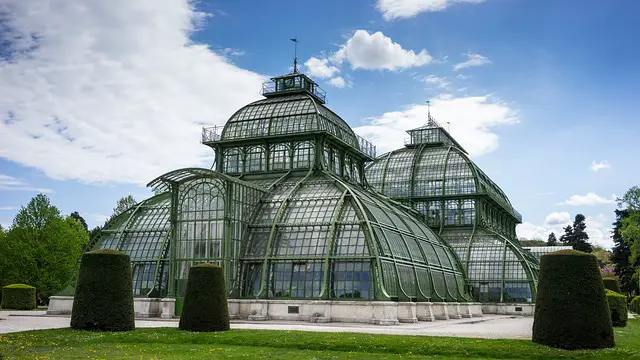
Schönbrunn Palace is one of the most famous landmarks of Vienna, Austria. It was the summer residence of the Habsburg emperors and is now a UNESCO World Heritage Site.
What to see or do: Visitors can explore the stunning interiors of the palace, including the Hall of Mirrors and the apartments of Franz Joseph and Sisi.
The palace also boasts beautiful gardens with fountains, sculptures, and the world’s oldest zoo.
Don’t miss: The Gloriette, a beautiful observation deck overlooking the palace and the city of Vienna. Also, make sure to catch the daily performance of the world-famous Lipizzaner horses at the nearby Spanish Riding School.
Insider travel tips: To avoid the crowds, it’s best to visit Schönbrunn Palace early in the morning or later in the afternoon. If you’re interested in the history of the palace, consider getting a guided tour.
Also, be sure to wear comfortable shoes as there is a lot of walking involved in exploring the palace and the gardens.
2. Hofburg Palace
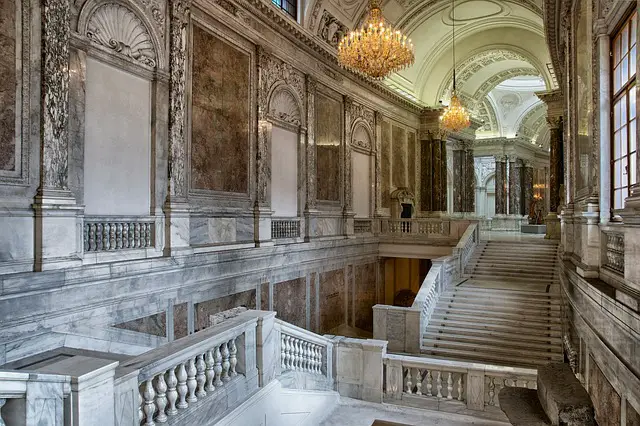
A stunning imperial palace located in the heart of Vienna, Austria.
What to see or do: Explore the luxurious interiors of the palace that served as the residence of the Habsburg dynasty. Marvel at the opulent apartments, extravagant halls, and galleries showcasing imperial treasures, including the crown jewels.
Visit the Sisi Museum and the Imperial Apartments to get an insight into the lives of Emperor Franz Joseph and his wife, Empress Elisabeth (Sisi).
Admire the grandeur of the Spanish Riding School, which is housed within the palace complex.
Don’t miss: The chance to see the Lipizzaner horses, which have been bred for centuries in Austria.
Witness their impressive displays of classical dressage in the Winter Riding School, one of the most beautiful baroque halls in the world.
Insider travel tips: Book a skip-the-line ticket in advance to avoid the long queues. Don’t forget to check out the palace’s beautiful gardens, which are open to the public.
If you visit during the summer months, catch a performance by the Vienna Philharmonic Orchestra at the palace’s courtyard as part of their annual concert series.
3. Mirabell Palace and Gardens
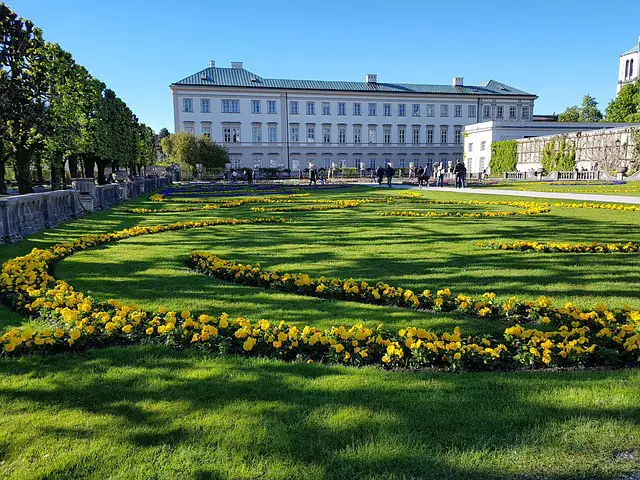
Mirabell Palace and Gardens is a historic building and a beautiful garden complex situated in Salzburg, Austria.
What to see or do: The Palace and Gardens offer a picturesque landscape, man-made fountains, sculptures, and lush greenery that attract visitors of all ages. Take a stroll along the axes of the garden and enjoy the seasonal floral blooms and gardens’ arrangements.
The site also features a grand marble staircase, exquisite artwork, and the Mirabell Palace, which houses government offices, making it difficult for the public to explore the inside of the palace.
Don’t miss: Be sure to capture the colourful, vibrant view of Salzburg while standing on the Pegasus Fountain, which you might remember from the iconic horse dancing scene of The Sound of Music movie.
Insider travel tips: Mirabell Palace and Gardens are accessible to everyone, and they are open throughout the year, but the best time to visit is during spring and summer when the flowers are in full bloom and sound of music concerts are held.
Visitors in wheelchairs or with mobility problems might find it difficult to climb the stairs leading to the palace’s balcony. Note that photoshoots and the use of drones are not allowed in the palace and garden despite its picturesque landscape.
4. Hohensalzburg Fortress
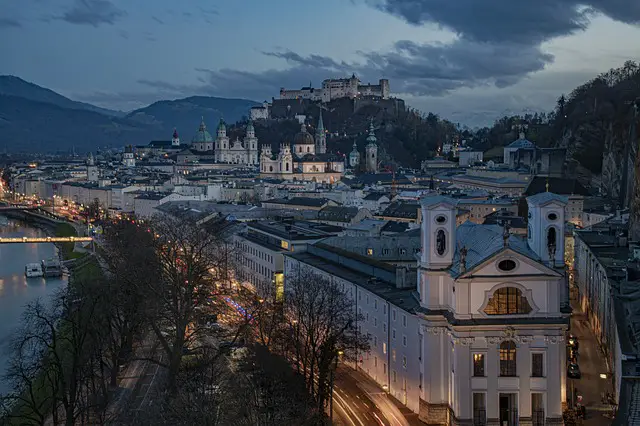
A fortress in Salzburg, Austria that sits atop a hill overlooking the city.
What to see or do: Take a guided tour of the castle to learn about its history and walk through the different rooms, including the torture chamber and the Prince’s apartments.
Enjoy panoramic views of Salzburg and the surrounding mountains from the top of the fortress.
Don’t miss: The fortress museum, which contains artifacts and exhibits about the history of Hohensalzburg and the surrounding region.
Insider travel tips: It’s recommended to book tickets online in advance to avoid lines at the ticket office. Take comfortable shoes as there is a steep walk to reach the fortress entrance.
Visit early in the morning or late in the day for the best photo opportunities with less crowds.
5. Belvedere Palace
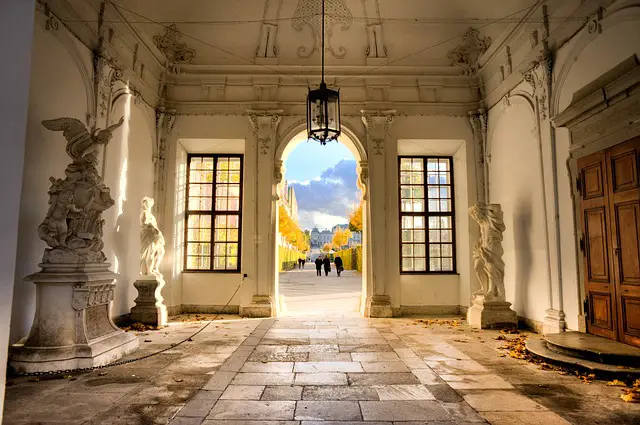
A historic complex in Vienna, Austria that consists of two Baroque palaces and a garden.
What to see or do: Admire the stunning Baroque architecture, especially the Marble Hall and the Golden Room. Take a stroll through the beautiful gardens, with fountains and sculptures.
Visit the Austrian National Gallery, which displays an impressive collection of Austrian art from the Middle Ages to the present day.
Don’t miss: Gustav Klimt’s famous painting “The Kiss” at the Upper Belvedere. It’s considered one of the greatest artworks of the early 20th century.
Insider travel tips: To avoid crowds, visit early in the morning or late in the afternoon. If you’re interested in art, take a guided tour to learn more about the history and context of the paintings.
The palace is easily accessible by public transport, so don’t bother with a car.
6. Melk Abbey
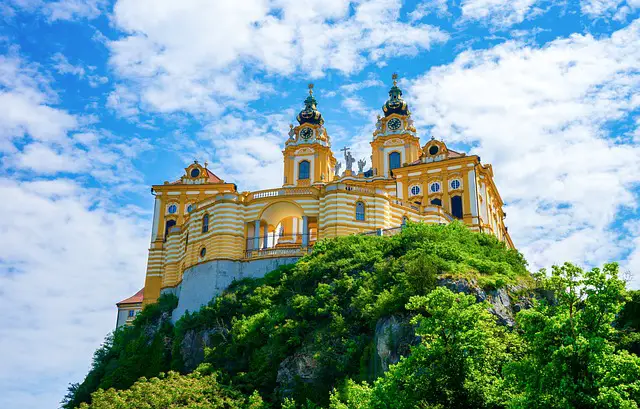
Melk Abbey is a large Benedictine monastery located in the town of Melk, Austria. It was founded in the 11th century and sits atop a rocky outcrop overlooking the Danube River.
What to see or do: Visitors to Melk Abbey can take guided tours of the monastery, which includes a visit to the impressive marble hall, the library with its collection of medieval manuscripts and frescoes, and the abbey church that features stunning Baroque architecture and artwork.
Don’t miss: The highlight of a visit to Melk Abbey is undoubtedly the stunning views of the Danube River and the surrounding valley.
The terrace and gardens offer breathtaking views that shouldn’t be missed.
Insider travel tips: – Guided tours are available in English and other languages, but it’s best to book in advance as they can sell out quickly.
7. Innsbruck Old Town

Innsbruck Old Town, also known as Altstadt, is the historic center of Innsbruck, Austria.
What to see or do: Wander through the picturesque streets and admire the colorful buildings, historic fountains, and landmarks including the Golden Roof, Triumphal Arch, and St.
Anne’s Column. Visit the Imperial Palace, Hofkirche Church, and Innsbruck City Tower.
Take in the views of the mountains from the panoramic city viewpoint, Hungerburg.
Don’t miss: Explore the bustling Maria-Theresien Street, lined with shops, cafes, and restaurants. Sample traditional Austrian cuisine and beverages at the market stalls.
During the holiday season, the Old Town comes alive with festive Christmas markets.
Insider travel tips: Arrive early in the morning to avoid the crowds and experience the town at its most peaceful. Wear comfortable shoes as there are steep slopes and uneven surfaces.
Visit in the summer months to enjoy outdoor cafes and local events. Don’t forget your camera to capture the stunning architecture and mountain views.
8. Krimml Waterfalls
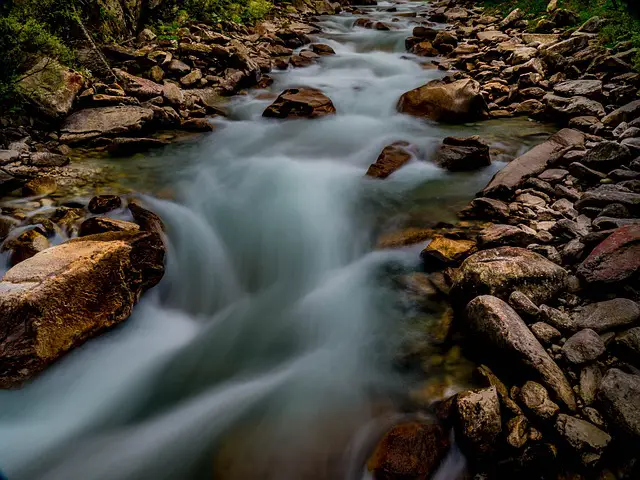
A series of cascading waterfalls in Krimml, Austria, that drop a total of 380 meters in height.
What to see or do: Marvel at the stunning views of the waterfalls as you hike along the well-maintained trails that lead to the top of the falls.
Take in the powerful rush of water and breathe in the fresh alpine air.
Don’t miss: The top of the waterfalls, where you can take in panoramic views of the surrounding mountains and valleys. Also, make sure to visit the WaterWonderWorld interactive museum to learn more about the science and ecology of the falls.
Insider travel tips: To avoid the crowds, plan to visit early in the morning or late in the day. Wear sturdy shoes for the hike and be prepared for mist and spray from the falls.
Don’t forget your camera to capture the breathtaking views!
9. Hallstatt Village
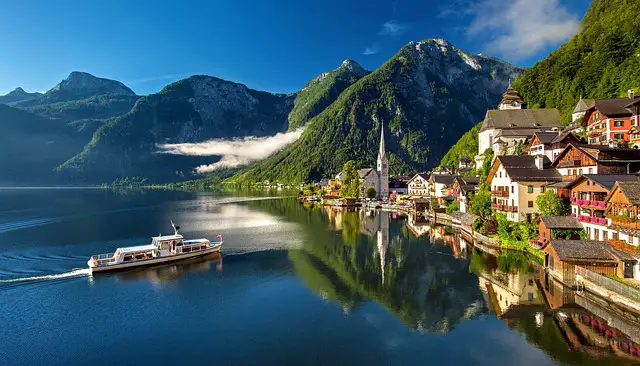
A picturesque village located in the Salzkammergut region of Austria, known for its breathtaking alpine scenery and charming architecture.
What to see or do: Take a stroll through the colorful streets lined with traditional houses and small shops. Visit the Hallstatt Salt Mine and explore its underground tunnels.
Admire the stunning views of Lake Hallstatt from the Dachstein Skywalk. Take a boat tour on the lake or hike in the surrounding mountains.
Don’t miss: The Upper Square, where you can find the iconic image of Hallstatt with the church and mountain backdrop. Also, be sure to try the local delicacy of smoked fish.
Insider travel tips: Visit early in the morning or later in the afternoon to avoid the crowds. If you have a car, take the scenic drive to the neighboring village of Gosau for more stunning views.
10. Grossglockner High Alpine Road
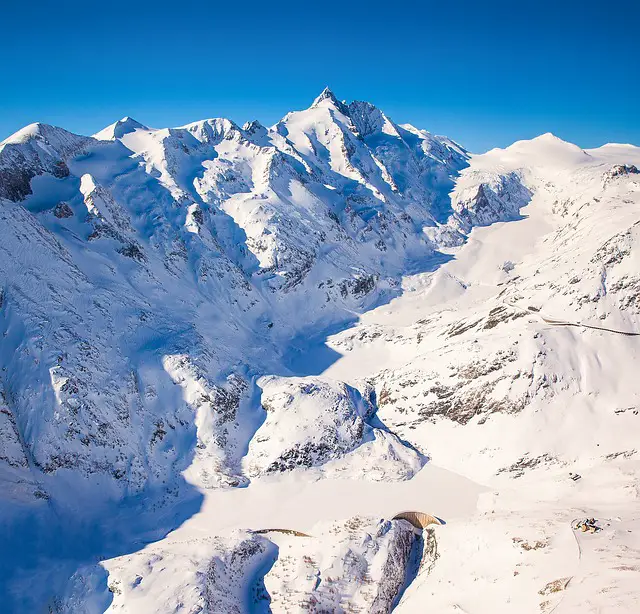
A scenic road located in Austria that takes travelers through the heart of the Hohe Tauern National Park and offers breathtaking views of the surrounding mountains.
What to see or do: Drive the 30-mile road and take in stunning panoramic views of the surrounding mountains and glaciers. There are also numerous hiking trails and outdoor activities available along the way.
Don’t miss: The Kaiser Franz Josefs-Höhe visitors center is a must-see stop along the way, offering incredible views of the Pasterze Glacier.
Insider travel tips: – The highest point of the road is at an elevation of 8,215 feet, so be prepared for some chilly temperatures and bring warm clothing.
11. Wachau Valley
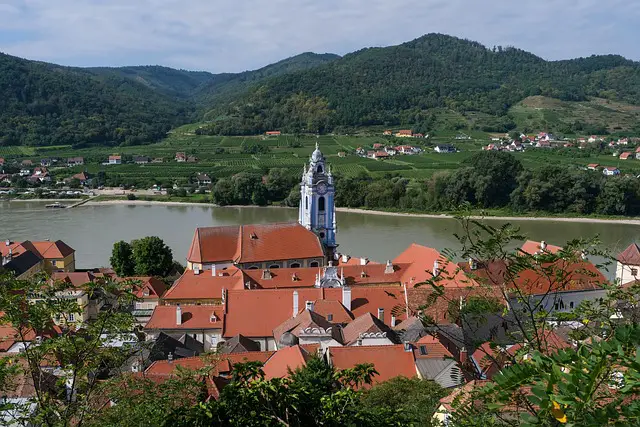
A picturesque river valley in Austria known for its stunning scenery, wine culture, and historic landmarks.
What to see or do: Take a scenic boat ride down the Danube River, explore the charming towns of Krems and Durnstein, visit the UNESCO World Heritage Site of Melk Abbey, and sample local wines at the many vineyards in the region.
Don’t miss: The stunning medieval castle ruins of Aggstein, hiking along the vineyard terraces, and sampling Marillenknödel (apricot dumplings) and other traditional Austrian dishes.
Insider travel tips: Visit in the fall for less crowds, better weather, and the annual Wachau Wine Festival. Be prepared for some steep climbs to reach some of the castles and viewpoints in the region.
Stay in one of the small towns for a more authentic experience and easy access to local wineries.
12. Salzburg Cathedral
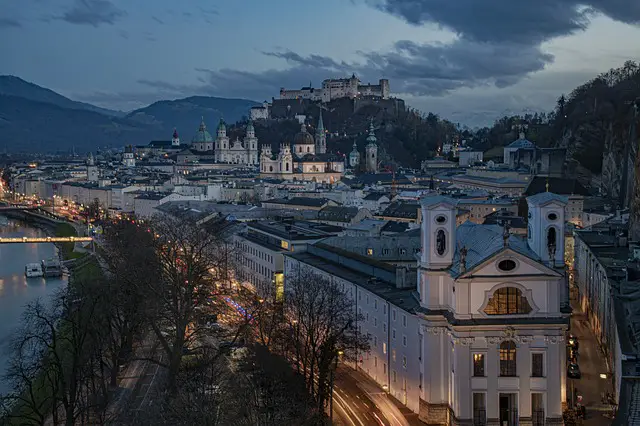
Salzburg Cathedral is a 17th-century Baroque-style cathedral located in the heart of Salzburg, Austria.
What to see or do: Visitors can explore the grand interior of the cathedral, which features awe-inspiring architecture, intricate details, and beautiful artwork. Don’t miss the impressive pipe organ, which dates back to the 18th century and is still used for regular performances.
Don’t miss: The cathedral also houses an impressive collection of religious artifacts, including paintings, sculptures, and tapestries, many of which are centuries old.
Make sure to step outside and admire the stunning façade of the cathedral, which is adorned with two striking towers and intricate carvings.
Insider travel tips: Plan your visit for a weekday morning to avoid crowds. Consider joining a guided tour to learn more about the history and significance of the cathedral.
Admission is free, but donations are appreciated. Remember to dress modestly and be respectful during your visit.
13. Vienna State Opera
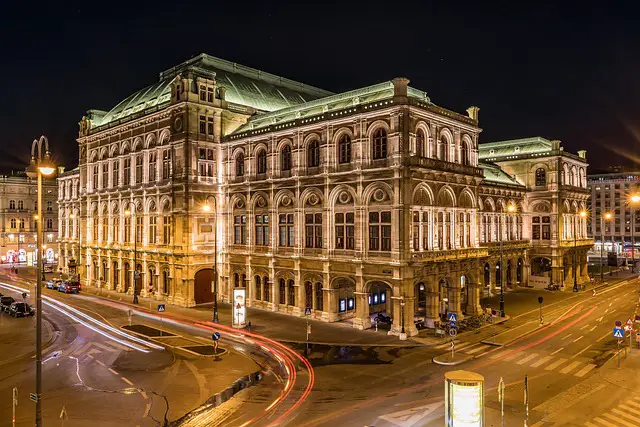
The Vienna State Opera, or Wiener Staatsoper in German, is one of the world’s most prestigious opera houses located in the heart of Vienna, Austria.
What to see or do: Enjoy captivating performances by world-renowned artists and orchestras in a majestic and opulent setting. The Vienna State Opera boasts a diverse repertoire of operas, ballets, and concerts throughout the year.
Don’t miss: Experience the grandeur of the Vienna State Opera by attending a performance that suits your taste. From classical opera to contemporary dance shows, there’s always something new to discover and enjoy.
Insider travel tips:
14. Spanish Riding School
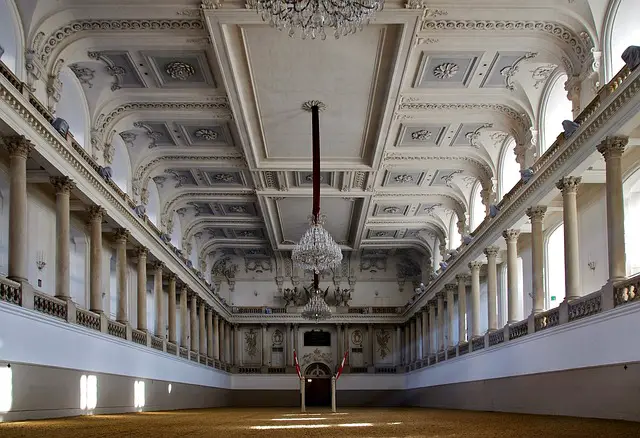
The Spanish Riding School is a traditional institution in Vienna, Austria that has been training horses and riders in classical dressage for over 450 years.
What to see or do: Visitors can attend performances and watch the skilled riders and their beautiful Lipizzaner horses perform choreographed routines, which highlight their incredible harmony and precision.
Don’t miss: One of the most popular events is the morning exercise, which happens daily and allows visitors to watch the horses and riders in a more informal setting.
Insider travel tips: Be sure to book your tickets in advance as performances often sell out quickly. For a more exclusive experience, consider booking a behind-the-scenes tour or attending a special gala performance.
Also, take the time to explore the stunning architecture of the Winter Riding School, where the performances take place.
15. Swarovski Crystal World
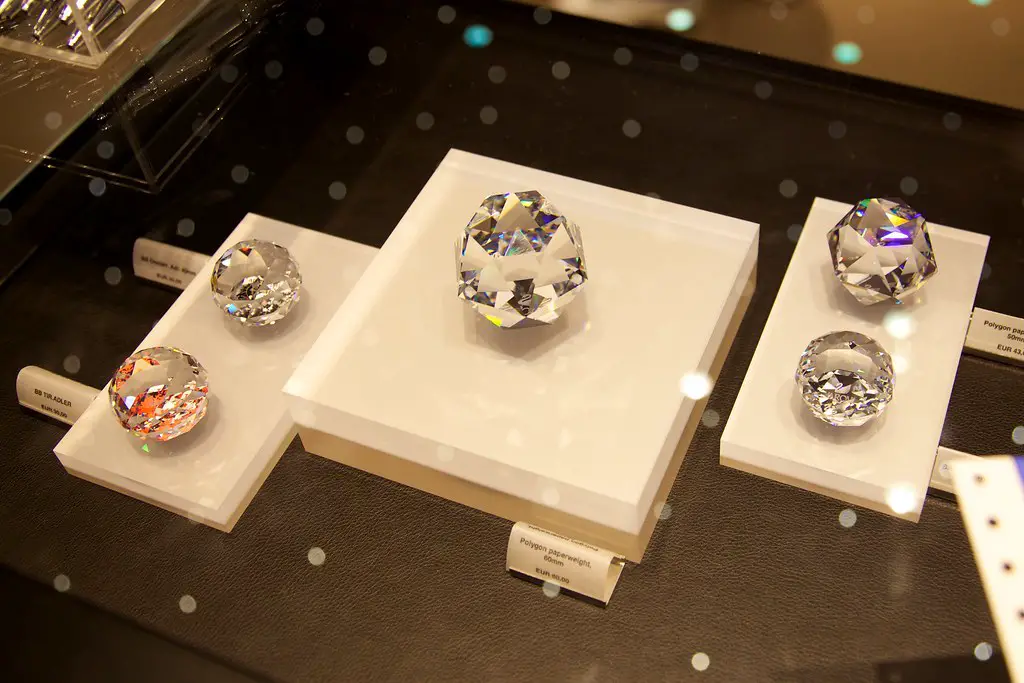
A museum and exhibition space dedicated to the art and beauty of Swarovski crystals.
What to see or do: Explore 16 chambers filled with sparkling crystal displays, interactive exhibits, and art installations. Marvel at the largest crystal in the world and take a journey through the history and craftsmanship of Swarovski.
Don’t miss: The Crystal Dome, featuring a stunning display of over 595 mirrors and 218,000 crystals. The “Chandelier” exhibit, which showcases incredible crystal creations from world-renowned designers.
Insider travel tips: Consider visiting in the morning or on weekdays to avoid crowds. Purchase tickets online in advance to save time.
Don’t forget to visit the on-site Swarovski store for unique souvenirs and gifts.
16. Eisriesenwelt Ice Cave
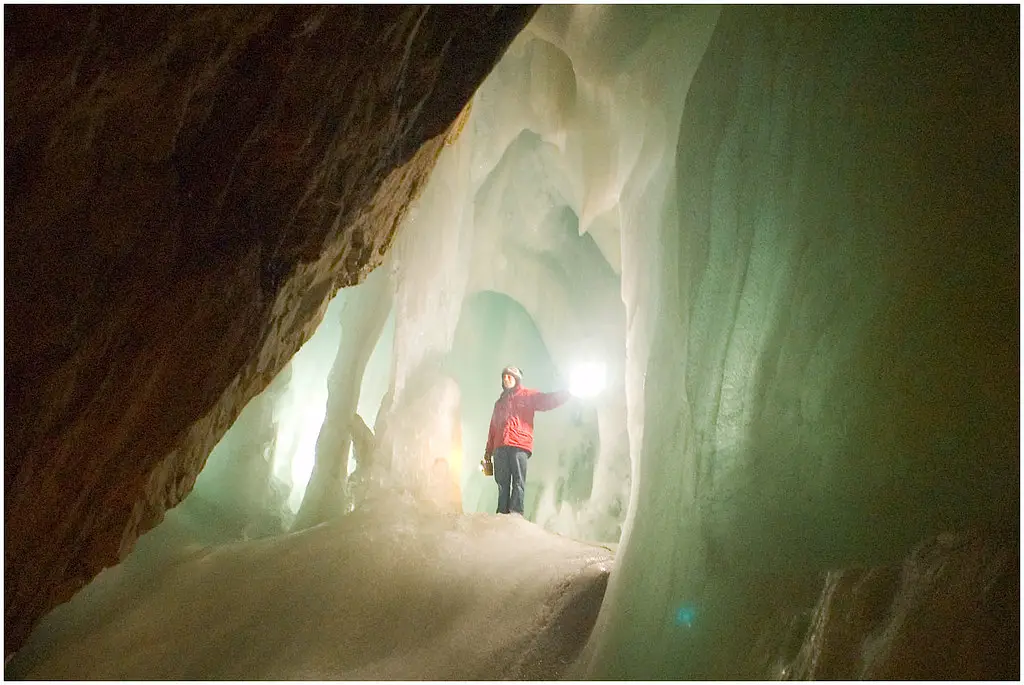
Eisriesenwelt is the largest ice cave in the world, located in Werfen, Austria.
What to see or do: Explore the stunning natural ice formations within the 42 km long cave. The guided tour will take you through various chambers, showcasing the incredible ice sculptures and frozen waterfalls.
Don’t miss: The highlight of the tour is the “Great Ice Embayment,” a massive cavern with ice formations that reach up to 75 feet high.
Insider travel tips: Make sure to wear warm clothing as the temperature inside the cave is below freezing even in summer. Photography is allowed, so bring your camera to capture the stunning scenery.
It’s a good idea to book your tickets in advance to secure your spot on the guided tour.
17. Leopold Museum
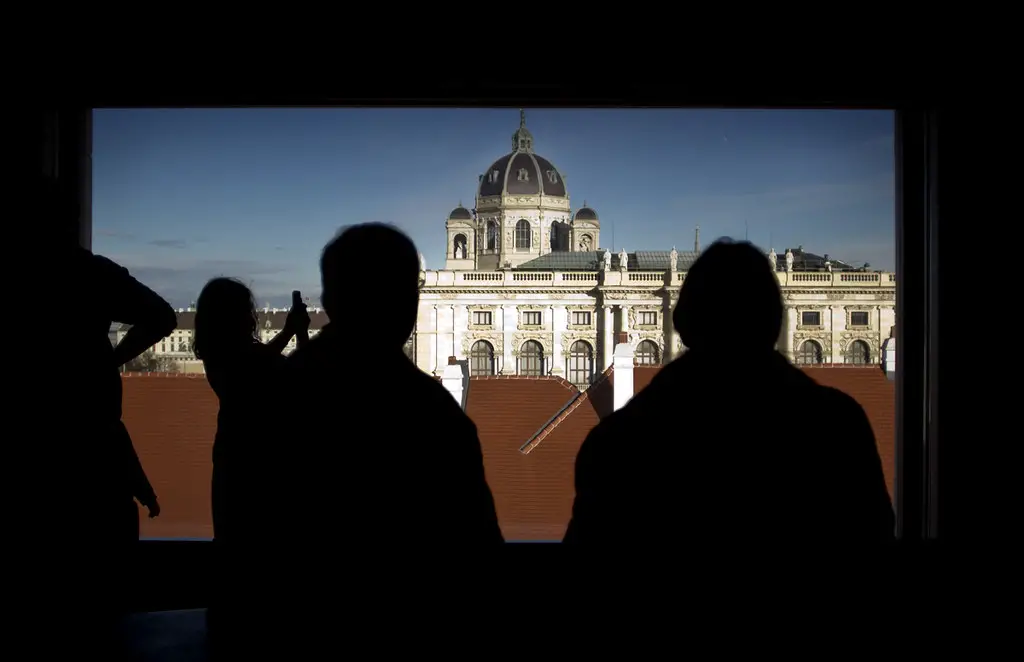
A museum in Vienna, Austria dedicated to modern Austrian art.
What to see or do: Admire the impressive collection of works by Austrian artists such as Gustav Klimt, Egon Schiele, and Oskar Kokoschka. The museum also hosts temporary exhibitions throughout the year.
Don’t miss: The highlights of the permanent collection, such as Klimt’s iconic “Death and Life” painting and Schiele’s introspective self-portraits.
Insider travel tips: If you’re interested in visiting other museums in the area, consider purchasing a combination ticket for the Leopold Museum and the nearby Museum of Fine Arts.
Also, visit the museum during the week to avoid crowds and be sure to check the museum’s website for special events and extended opening hours.
18. DomQuartier Salzburg
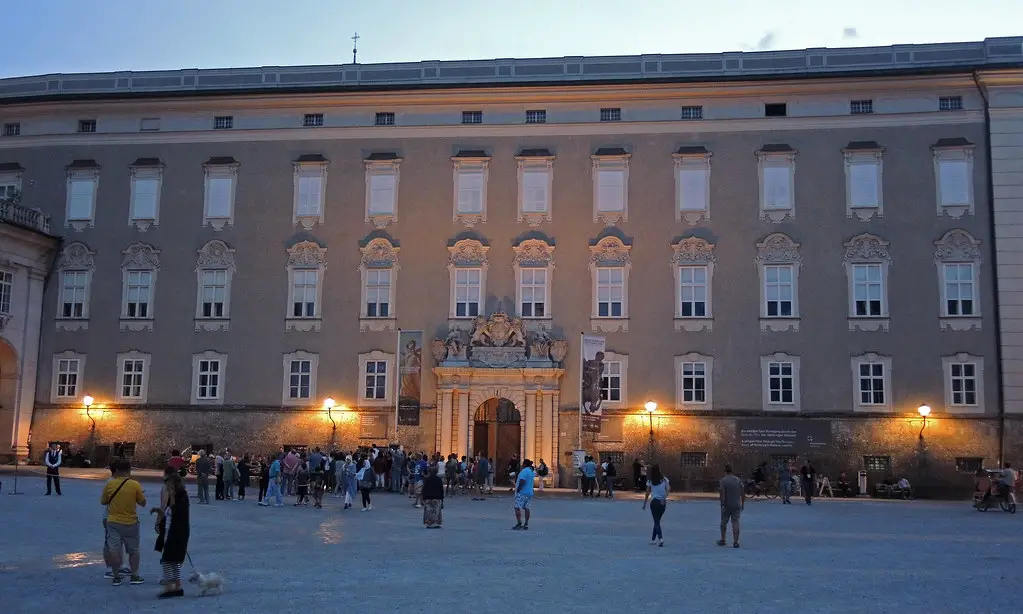
The DomQuartier is a complex of five museums and historic buildings in Salzburg, Austria, located in the vicinity of Salzburg Cathedral and adjacent to Residenzplatz.
What to see or do: Visitors can view exhibits related to Salzburg’s history, architecture, and art. The complex includes the Residenz State Rooms, the Cathedral Museum, St.
Peter’s Museum, the Long Gallery, and the Carillon Museum.
Don’t miss: Make sure to see the marble staircase in Residenz State Rooms, the impressive baroque ceiling frescos in the Long Gallery, and the collection of historic keyboard instruments in the Carillon Museum.
Insider travel tips: – Buy a combined ticket for all five museums to save money and time.
19. Danube Valley
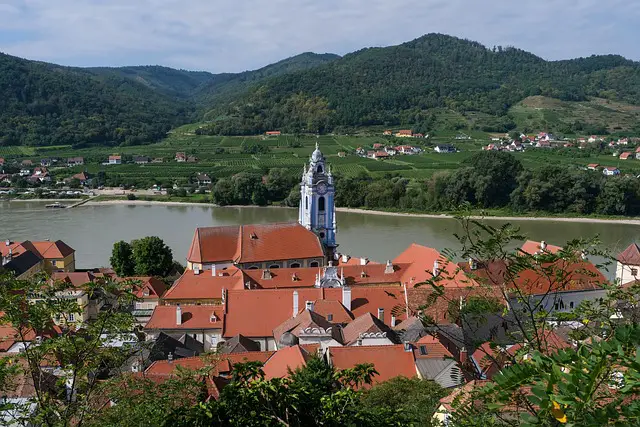
The Danube Valley, also known as the Wachau Valley, is a picturesque region in Austria that is famous for its stunning landscape, charming towns and rich cultural heritage.
What to see or do: Take a scenic drive along the Danube river, visit the beautiful town of Durnstein and admire the magnificent Melk Abbey. Stop at local wineries for wine tastings and sample the delicious local cuisine.
Don’t miss: The medieval town of Krems, which is a UNESCO World Heritage Site, and the stunning views from the hilltop ruins of Aggstein Castle.
Insider travel tips: Take a leisurely bike ride along the Danube river and explore the charming villages and vineyards in the region. Visit the towns of Spitz and Weissenkirchen for a unique taste of local life.
And, don’t forget to try the famous apricot liqueur, a regional specialty.
20. Kaprun High Altitude Reservoirs
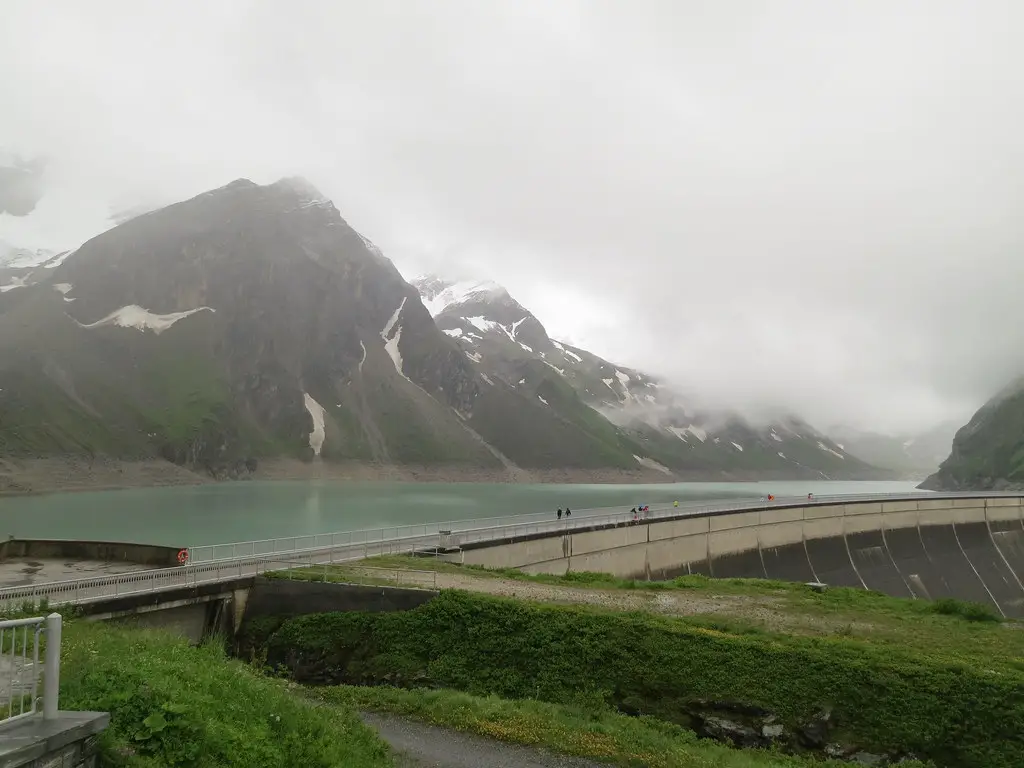
Kaprun High Altitude Reservoirs are two man-made lakes located in Kaprun, Austria, at an altitude of 2,000m above sea level.
What to see or do: Visitors can take a guided tour of the reservoirs and learn about their history and construction. The tour offers stunning panoramic views of the surrounding mountains.
Don’t miss: Don’t miss the impressive dam wall that holds back the water of the Mooserboden lake, which is over 100m high and 494m wide.
Insider travel tips: Pack warm clothing and sturdy footwear as the weather can be unpredictable. The reservoirs are only open during the summer months, typically from May to October.
During peak season, it’s recommended to book the tour in advance to avoid disappointment.
21. Graz Old Town
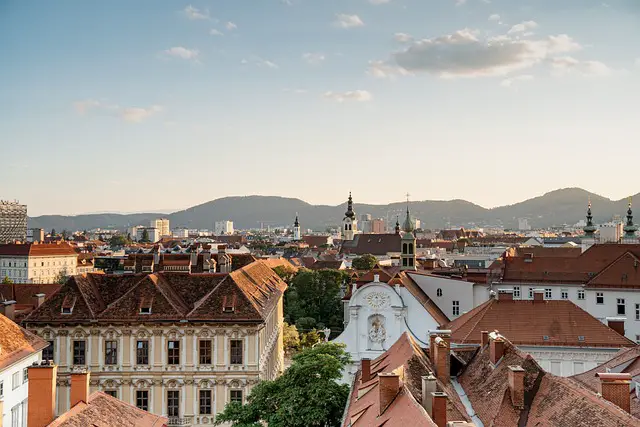
A charming and historical city center located in Graz, Austria.
What to see or do: Stroll through the narrow cobblestone streets and admire the beautiful Baroque architecture and colorful facades. Visit the Graz Cathedral, Mausoleum of Emperor Ferdinand II, and the Graz Museum.
Take a ride on the Schlossbergbahn funicular for panoramic views of the city.
Don’t miss: The Hauptplatz or Main Square, which is the heart of the Old Town and home to several cafes, restaurants, and shops.
Also, visit the Schloss Eggenberg palace and gardens, a UNESCO World Heritage Site.
Insider travel tips: Take a guided walking tour to learn more about the history and culture of Graz. Try some local cuisine at the farmers’ market, which takes place every Saturday in the main square.
Don’t forget to bring comfortable shoes, as the cobblestone streets can be uneven.
22. Wolfgangsee Lake
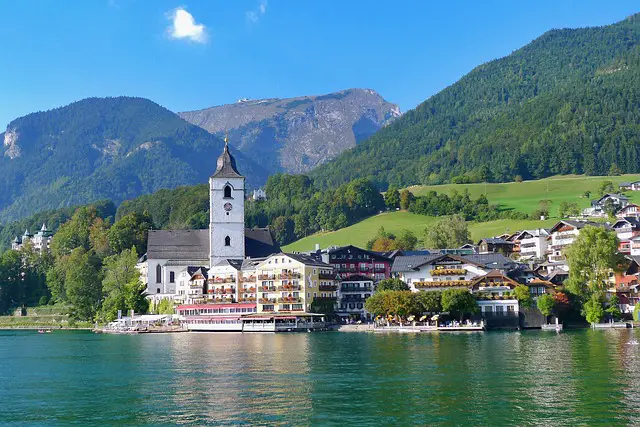
Wolfgangsee is a picturesque lake located in the Austrian state of Salzburg. The lake is over 10km long and is surrounded by breathtaking alpine scenery.
What to see or do: Visitors can rent a boat and explore the pristine waters of the lake. The area is also perfect for hiking, mountain biking, and swimming.
Many charming towns and villages are scattered around the lake, including St. Gilgen, Strobl,and St.
Wolfgang, each with their unique character and tourist attractions.
Don’t miss: The idyllic town of St. Wolfgang is a must-see, with its beautiful lakeside promenade, historic abbey, and the famous pilgrimage church of St.
Wolfgang.
Take a steam train ride up to the summit of the Schafberg Mountain for panoramic views of the lake and surrounding mountains.
Insider travel tips: Visit during the quieter months of May or September to avoid the crowds of summer tourists. Locals recommend taking the ferry to visit different villages around the lake.
For a unique experience, book a night cruise to enjoy dinner and drinks while taking in the tranquil surroundings.
23. Kunsthistorisches Museum Vienna
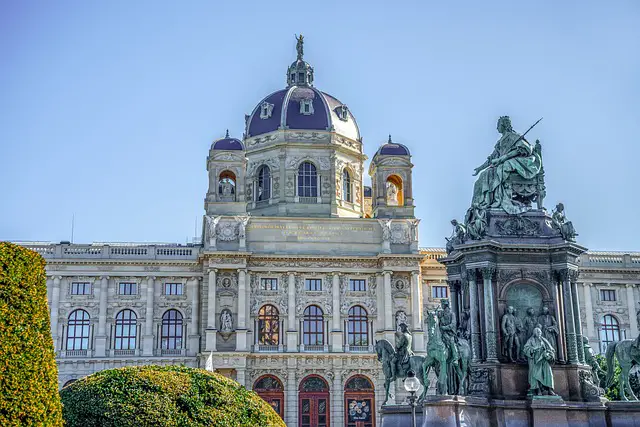
The Kunsthistorisches Museum Vienna is one of the largest and most renowned art museums in the world.
What to see or do: The museum boasts an extensive collection of artworks from the Habsburg family, including masterpieces by famous artists such as Rembrandt, Vermeer, and Raphael.
Visitors can admire stunning Baroque architecture and explore a vast array of sculptures, paintings, and decorative arts spanning millennia.
Don’t miss: The Egyptian and Near Eastern Collection, featuring mummies, sarcophagi, and ancient artifacts, is a must-see for history buffs.
Be sure to also check out the Kunstkammer or “Cabinet of Curiosities,” showcasing rare gems, exotic taxidermy, and other curiosities from around the globe.
Insider travel tips: Avoid the crowds by purchasing tickets in advance online, and take advantage of the free audio guide to enhance your museum experience.
The Kunsthistorisches Museum’s on-site café boasts delicious coffee and traditional Austrian pastries, a perfect spot to recharge and relax.
24. Mayrhofen Ski Resort
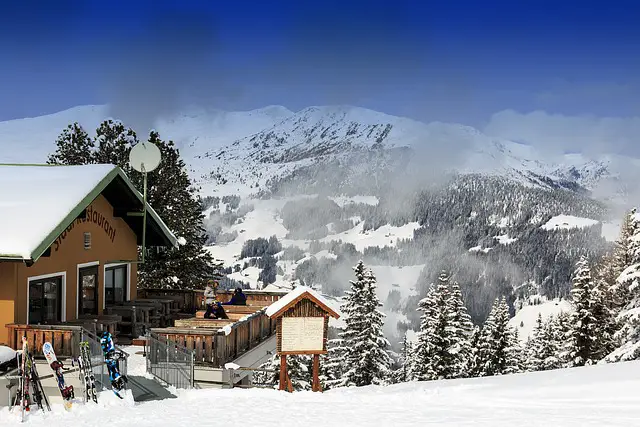
Mayrhofen Ski Resort is a popular ski destination located in the Zillertal Valley in Austria.
What to see or do: Skiers and snowboarders can enjoy 136km of pistes, ranging from beginner to advanced levels. There is also a terrain park and halfpipe for freestyle enthusiasts.
In addition to skiing, visitors can go ice skating, tobogganing, and snowshoeing.
Don’t miss: Take the Ahornbahn cable car to the top of Ahorn Mountain for stunning views of the surrounding mountains. The Penkenbahn cable car also offers panoramic views and is a great way to access the ski area.
Insider travel tips: Consider purchasing the Zillertal Superskipass which grants access to over 500km of pistes in the Zillertal Valley. For a unique experience, visit the White Lounge Igloo Village which offers ice bar, lounge and even a cinema.
25. Riegersburg Castle
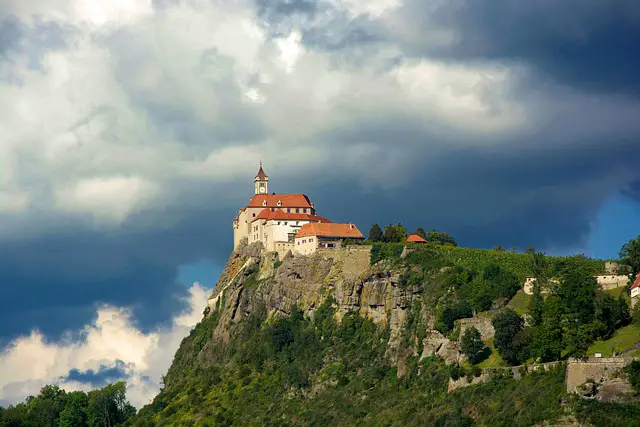
What to see or do:
Don’t miss:
Insider travel tips:
26. Reutte Highline179
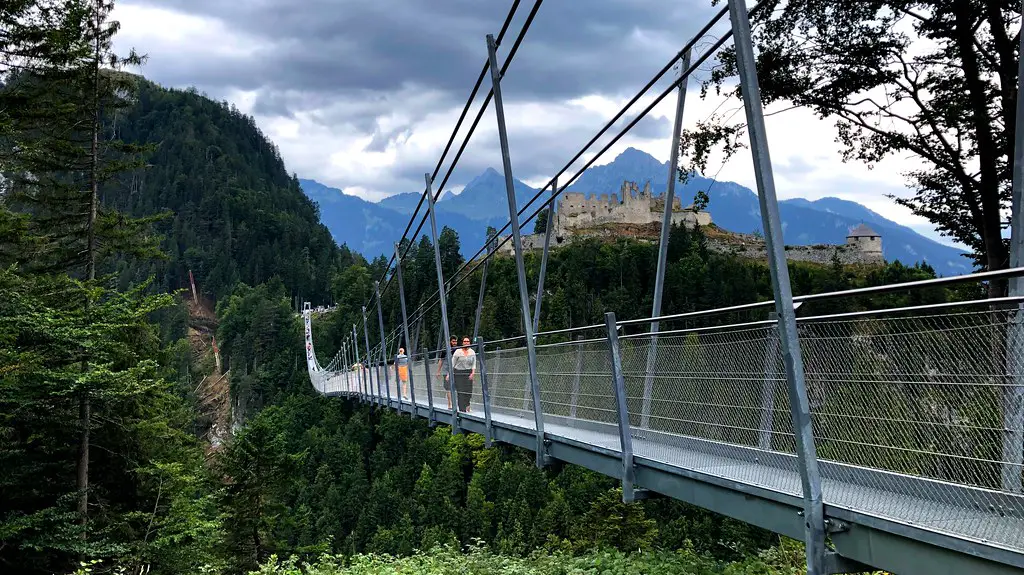
A suspension pedestrian bridge hanging 114 meters above the ground, the longest of its kind in the world.
What to see or do: Walk across the Highline179 bridge, take in the stunning views of the surrounding mountains and the Austrian countryside.
Don’t miss: Taking a deep breath and feeling the adrenaline rush as you make your way across the bridge.
Insider travel tips: Avoid going during peak tourist season to avoid crowds, wear comfortable shoes as the walk to the bridge is steep, and bring a camera to capture the breathtaking views.
27. Karlskirche
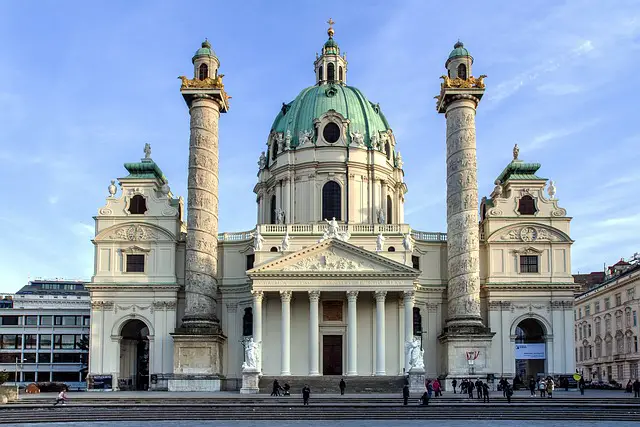
Karlskirche, also known as St. Charles’s Church, is a baroque church located in the heart of Vienna, Austria.
What to see or do: Visitors can admire the church’s stunning baroque architecture, including its impressive dome and columns. Inside, the church boasts elaborate frescoes and intricate sculptures.
Don’t miss: Make sure to climb the church’s dome for stunning views of Vienna’s skyline. Additionally, don’t miss the opportunity to attend a classical concert that takes place inside the church.
Insider travel tips: Visit Karlskirche in the early morning or late evening to avoid crowds. Also, invest in an audio guide to learn more about the church’s history and architecture.
Finally, dress appropriately as the church is still a functional place of worship.
28. Dürnstein Village
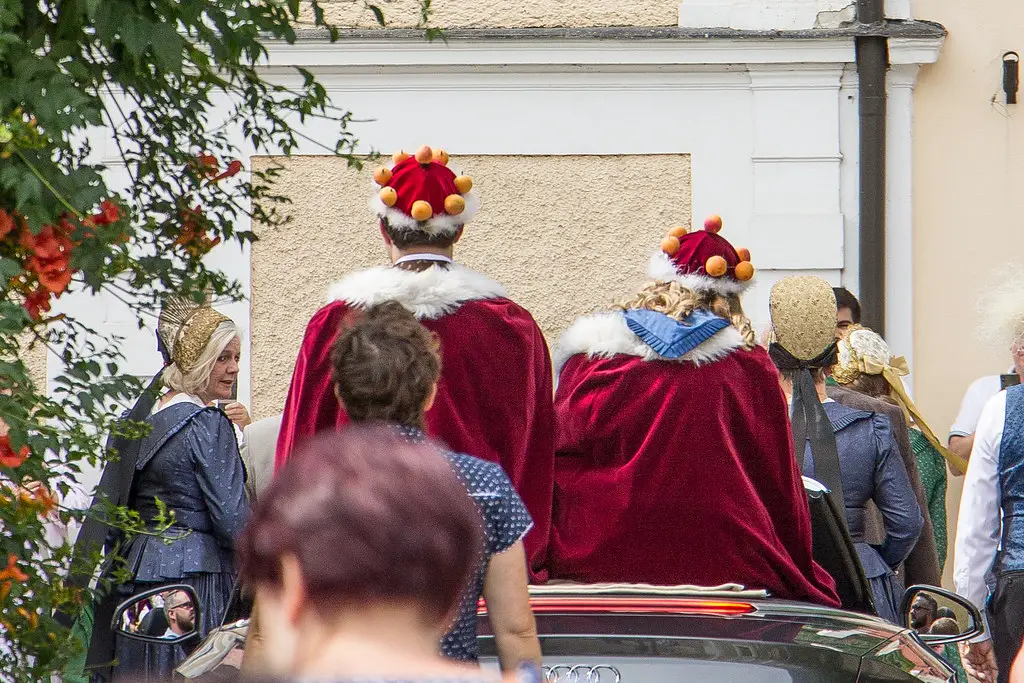
A picturesque village located in the Wachau Valley region of Austria, situated on the banks of the Danube River.
What to see or do: Stroll through the charming streets lined with historic buildings, including the 15th century Dürnstein Castle ruins. Taste the local wine at one of the many wineries in the area.
Take a boat ride on the Danube River and enjoy the stunning views of the surrounding vineyards and countryside.
Don’t miss: The blue baroque tower of the Stiftskirche, a church located at the top of the hill overlooking the village. The tower is a iconic landmark and the views from the top are breathtaking.
Insider travel tips: Visit in the summer months to enjoy the warm weather and attend the annual wine festivals.
Be sure to try the local apricot jam (known as Marillenmarmelade) which is made from the famous apricots grown in the surrounding area.
29. Mariazell Basilica
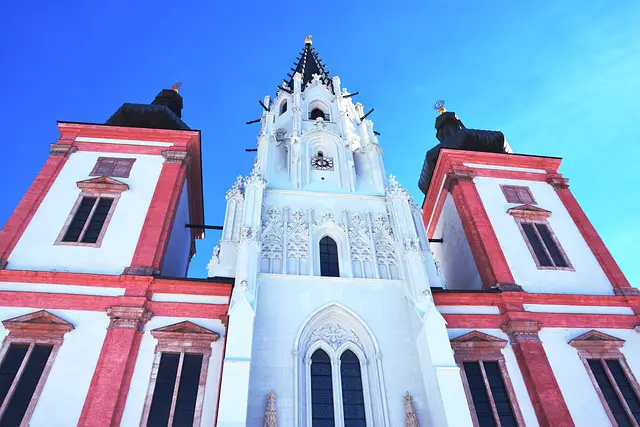
A famous pilgrimage site and one of the most significant religious landmarks in Austria.
What to see or do: Visitors can marvel at the breathtaking baroque architecture of the Mariazell Basilica, which features elaborate frescoes, sculptures, and intricate details. The basilica’s interior is adorned with stunning works of art, altars, and sacred relics.
Additionally, visitors can attend daily masses or explore the Basilica Museum, which houses a collection of religious art and artifacts.
Don’t miss: The miraculous statue of the Virgin Mary, which is believed to have healing powers. It can be found in the basilica’s main altar and is considered the heart of the pilgrim’s devotion.
Insider travel tips: Visitors should check the basilica’s website before going, as there are sometimes special exhibitions or events taking place. Additionally, it is recommended to arrive early if attending a mass or during peak pilgrimage season to avoid crowds.
💪 Support independent web, support us: